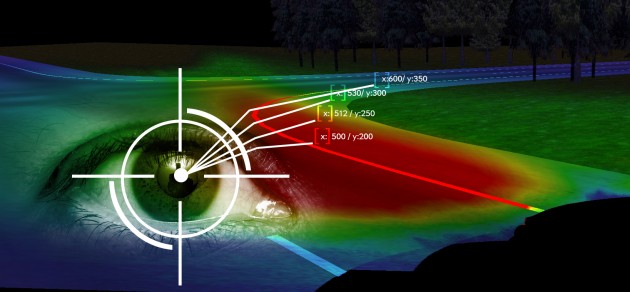
Engineers at Opel, along with its English affiliate, Vauxhall, have confirmed that they are in the midst of developing the next-generation range of adaptive head lamps that uses an optic-based tracking system to illuminate the road ahead - essentially, shining where the driver is looking at.
Billed as the successor to the marque's Adaptive Forward Lighting (AFL+) platform, the system employs a camera with "peripheral infra-red sensors" as well as "central photo-diodes" that enable it to scan the driver's eyes more than 50 times per second.
Upon receiving the data, the actuators in the head lamps will make the necessary adjustments, both vertically and horizontally. As simple as it may seem, one will know that a human eye possesses the tendency to jump from one focus point to another - should the system follow suit, total chaos would ensue as beams would be projected in an erratic manner that would be hazardous to other motorists.
As a solution, the engineers have developed a form of "delayed algorithm" which ensures that the beams do not jerk around but instead alter its projection in a more fluid manner. In further proving its near-production status, Ingolf Schneider, Director Lighting Technology at Opel added that "that the eye-tracker doesn't have to be individually calibrated for a particular driver... no matter what their size."
In addition to its eye-tracking technology, Opel/Vauxhall is also on track to introduce its next-generation LED matrix lighting system. The system will provide "glare-free, high beam lighting" which constantly adapts to traffic conditions via the Opel/Vauxhall Eye Camera.
The system works by detecting light sources from vehicles ahead and reacts by shutting off the required amount of LEDs as to not blind the oncoming motorist. The rest of the road, however, remains illuminated. The firm is currently targeting an 18-month duration to introduce this platform onto its production models.
No comments:
Post a Comment